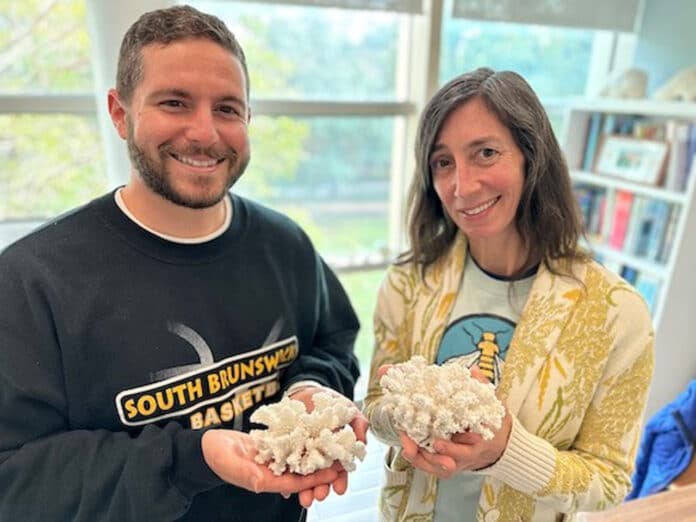Scientists have made a remarkable discovery in the world of corals: ancient viruses hidden within the DNA of coral symbionts. These tiny organisms, which form a crucial partnership with corals, were found to carry remnants of viral genetic material dating back thousands of years.
This breakthrough sheds new light on the intricate relationship between corals and viruses, providing valuable insights into their coevolution and potential impacts on coral reef ecosystems. By unraveling the mysteries of these ancient viruses, researchers aim to deepen our understanding of coral health and resilience in the face of environmental challenges.
Marine biologists have made a groundbreaking discovery, uncovering ancient RNA viruses preserved within the DNA of symbiotic organisms found in reef-building corals. These remnants of RNA viruses dated back as far as 160 million years and were found embedded within the genomes of coral symbionts, surprising scientists as it is uncommon for RNA viruses to integrate into the DNA of their hosts.
The study, co-led by marine biologist Adrienne Correa and Rice graduate student Alex Veglia, highlights endogenous viral elements (EVEs) in the genomes of coral symbionts known as dinoflagellates. These single-celled algae reside within corals and contribute to their vibrant colors. The discovery of these ancient viruses opens up new avenues for understanding the interactions between corals and viruses and how they combat viral infections in present times.
“So why did it get in there?” asked study co-author Adrienne Correa of Rice University. “It could just be an accident, but people are starting to find that these ‘accidents’ are more frequent than scientists had previously believed, and they’ve been found across all hosts, from bats to ants to plants to algae.”
That an RNA virus appeared in coral symbionts was also a surprise.
“This is what made this project so interesting to me.” said study lead author Alex Veglia, a graduate student in Correa’s research group. “There’s no reason, based on what we know, for this virus to be in the symbionts’ genome.”
Supported by the Tara Ocean Foundation and the National Science Foundation, researchers from Rice University and Oregon State University have made significant strides in understanding the impact of viruses on reef health. They discovered endogenous viral elements (EVEs) from RNA viruses embedded in the genomes of coral symbionts, exclusively found in corals and not other organisms.
This finding prompts inquiries about the selection process of target hosts by pathogenic viruses and the potential role of EVEs in dinoflagellates’ antiviral mechanisms. The study also underscores the possible effects of warming oceans on EVE presence and productivity, offering insights into coral health. These findings contribute to a deeper understanding of the complex interplay between viruses and coral ecosystems.
Identifying ancient viruses within the DNA of coral symbionts provides a fascinating glimpse into the historical virus-host dynamics in coral reefs. This discovery deepens our understanding of the intricate relationships between viruses and corals. It opens up new avenues for studying viruses’ ecological and economic impact on reef health. Further research in this field can contribute to the conservation and management of these vital ecosystems in the face of ongoing environmental challenges.
Journal Reference:
- Veglia, A.J., Bistolas, K.S.I., Voolstra, C.R. et al. Endogenous viral elements reveal associations between a non-retroviral RNA virus and symbiotic dinoflagellate genomes. Communications Biology. DOI: 10.1038/s42003-023-04917-9
